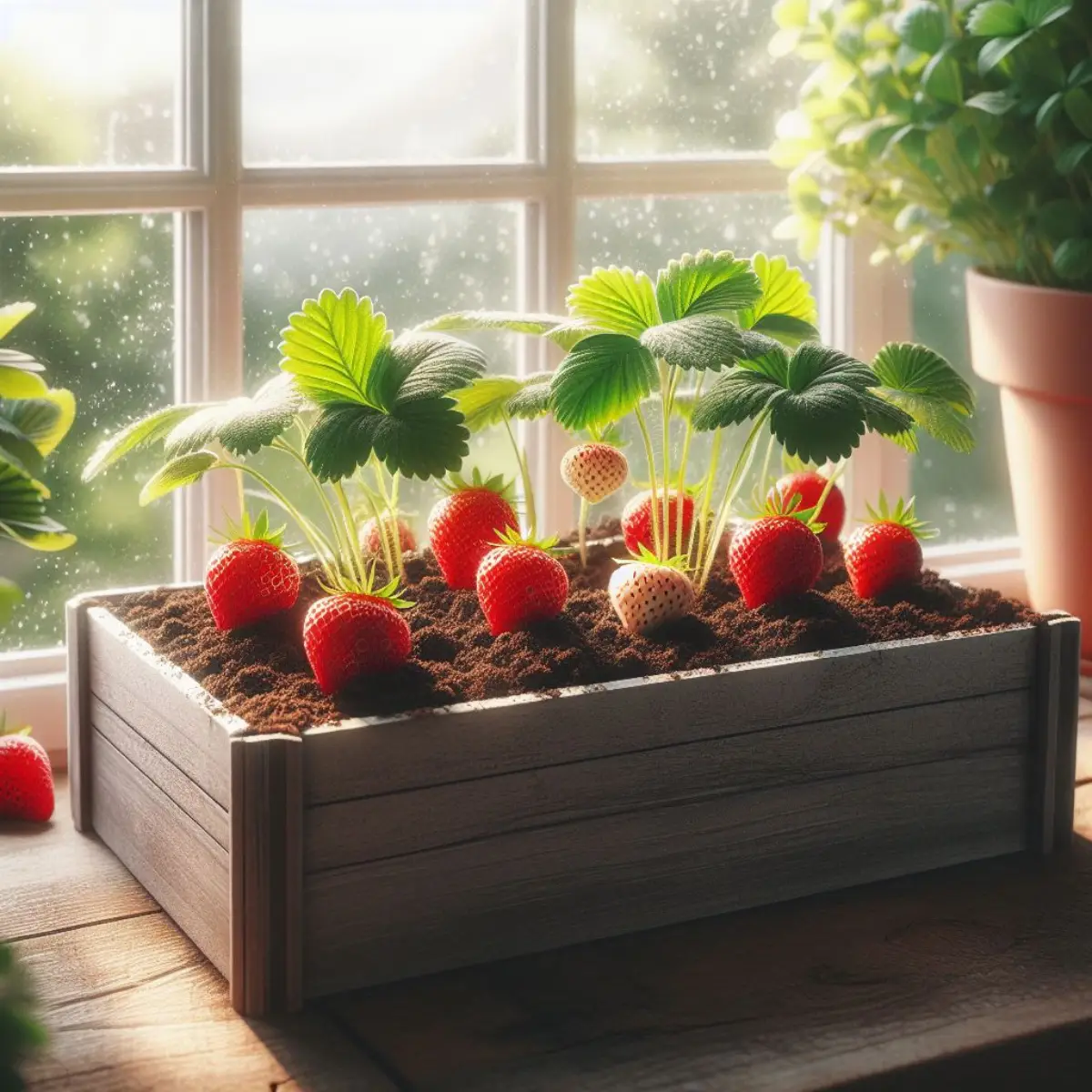Growing citrus from seed at home is a delightful and rewarding endeavor, perfect for garden enthusiasts and novices alike.
Whether you’re looking to enhance your indoor garden, add a touch of green to your living space, or simply enjoy the challenge of nurturing a plant from its very beginning, citrus trees are a versatile choice.
Choosing the Best Citrus Varieties to Grow from Seed
Growing citrus from seed can be a fascinating project for any plant lover. While not all citrus fruits will produce the same quality fruit as the parent due to genetic variability, many can still offer a rewarding experience. Here are some of the best citrus varieties you can grow from seed at home:
Lemon and Meyer Lemon
Lemons are perhaps the most popular citrus to grow from seed because they adapt well to indoor environments and can start producing fruit in just a few years. Meyer lemons, in particular, are known for their sweeter, less acidic flavor compared to traditional lemons and are more compact, making them ideal for indoor growth.
Grapefruit Varieties
Grapefruit trees, such as the ‘Star Ruby’ with its deep red flesh and excellent flavor, are great for seed growth. They can be larger trees, so they’re more suited to spacious indoor areas or outdoor gardens in suitable climates. ‘Marsh Seedless’ and ‘Red Blush’ are also popular choices for their flavorful fruit and relatively easier care.
Yuzu
This rare citrus variety is highly prized for its unique flavor and aroma, commonly used in Japanese cuisine. Yuzu can be grown in cooler climates compared to other citrus fruits and does well in containers, making it a suitable choice for areas that experience colder winters.
Tangerines and Oranges
Tangerines and oranges are delightful to grow from seeds as they often produce sweet, juicy fruits, although they typically require a bit more care and time to mature than lemons. The satisfaction of eventually harvesting your own oranges or tangerines can be well worth the effort.
Each of these citrus varieties offers its own unique set of characteristics and challenges. When choosing a type to grow from seed, consider factors like your climate, the space available, and how much care you’re willing to invest in your new citrus plant. With patience and proper care, you can enjoy the rewarding process of growing these vibrant fruits right from the seed.
Seed Preparation for Growing Citrus from Seed
Proper seed preparation is crucial for successfully growing citrus trees from seeds. Here’s a step-by-step guide to preparing citrus seeds:
- Selecting the Right Seeds: Always start with seeds from a ripe citrus fruit. Avoid seedless varieties as they do not provide viable seeds for planting. Citrus fruits like lemons, oranges, and grapefruits typically contain seeds suitable for growing.
- Extracting Seeds: Carefully cut open your chosen fruit and extract the seeds. Make sure to remove all the fruit pulp from the seeds, as leftover organic material can lead to fungal growth during the germination process.
- Cleaning the Seeds: Rinse the seeds under lukewarm water to remove any remaining pulp or juice. This step ensures the seeds are clean and ready for the next stage.
- Peeling the Seeds (Optional): Citrus seeds are encased in a hard outer shell that can inhibit water absorption, delaying germination. Carefully peel this layer off to expose the more permeable inner seed coat. This step is optional but can significantly speed up germination. Use a small knife or your fingernails to gently scrape away the outer shell, taking care not to damage the seed itself.
- Pre-Germination Treatment: To further enhance germination, some gardeners recommend soaking the cleaned seeds in water overnight. This soaking can help soften the seed coat and encourage the embryo within to start growing.
By following these steps, your citrus seeds will be well-prepared for planting, providing them with the best start possible. Proper seed preparation not only speeds up the germination process but also increases the likelihood of growing a healthy citrus plant.
Planting Citrus Seeds
Once your citrus seeds are prepared, it’s time to plant them. This crucial stage sets the foundation for a healthy plant. Here’s how to properly plant your citrus seeds:
Choose the Right Soil
- Soil Type: Citrus trees thrive in well-draining, slightly acidic to neutral soil. You can use a commercially available citrus potting mix or make your own by mixing regular potting soil with some sand or perlite to improve drainage.
Selecting the Container
- Pot Size: Begin with a small pot about 4-6 inches deep that has good drainage holes to prevent waterlogging, which can be detrimental to seed germination.
- Upgrading: As the plant grows, be prepared to transplant it to larger pots to accommodate the growing root system.
Planting the Seeds
- Planting Depth: Plant the seeds about 1/2 inch deep in the soil. This depth provides the right balance between moisture retention and access to light, which is crucial for germination.
- Spacing: If planting multiple seeds in one pot, space them at least a couple of inches apart to give each seed enough room to develop into a seedling.
Watering After Planting
- Initial Watering: Gently water the soil just enough to make it moist but not soggy. Use a spray bottle to mist the surface to prevent the seeds from being disturbed or washed away.
- Maintaining Moisture: Keep the soil consistently moist during the germination period. Covering the pot with plastic wrap or a transparent plastic bag can help retain moisture and warmth.
Positioning for Growth
- Light: Place the pot in a warm, well-lit area but out of direct sunlight until the seeds germinate. Once sprouts appear, they can be moved to a brighter area where they can receive around 6-8 hours of sunlight daily.
- Temperature: Citrus seeds germinate best at temperatures between 65-70°F (18-21°C). Keep them away from cold drafts and excessive heat sources.
Observation and Care
- Monitoring: Watch for the first signs of sprouting, which could take anywhere from a few weeks to a couple of months, depending on the citrus variety and seed condition.
- Adjustments: If mold appears on the surface or the plastic cover, remove it temporarily to let the area dry slightly. This helps prevent fungal infections that can harm the seedlings.
By carefully following these steps, you’ll set your citrus seeds on the right path toward developing into robust and fruitful trees. Regular observation and minor adjustments during the early stages of growth ensure your seedlings have everything they need to thrive.
Light and Temperature Requirements
Proper light and temperature are critical for the successful germination and growth of citrus seeds. Here’s what you need to know to provide the best environment for your citrus seedlings:
Light Requirements
Sunlight Exposure: Citrus plants require ample light to thrive. After germination, seedlings should be placed in a location where they can receive at least 6-8 hours of sunlight per day. If natural light is limited, especially in winter months, using artificial grow lights can provide the necessary spectrum of light they need to grow healthy.
Type of Light: Grow lights should ideally be full-spectrum or at least mimic natural sunlight. This helps in promoting strong and healthy growth. Position the lights close enough to provide direct light but far enough away to prevent overheating the leaves.
Temperature Requirements
Optimal Temperature Range: Citrus seedlings grow best in a consistent temperature range of 65-70°F (18-21°C). It’s crucial to maintain this temperature range, as too much fluctuation can stress the plants and hinder their development.
Avoiding Temperature Extremes: Keep the seedlings away from drafts, heating vents, and air conditioning units. Such extremes can dry out the plant quickly and cause temperature fluctuations that are too abrupt for young citrus plants.
Seasonal Adjustments: If growing the seedlings in an area with significant seasonal temperature changes, it’s important to gradually acclimate them to the changes.
For example, if moving plants outdoors for the summer, start by placing them outside for only a few hours each day and gradually increase their exposure to outdoor conditions over a week or two to prevent shock.
Watering and Humidity for Growing Citrus
Proper watering and humidity control are essential for the healthy growth of citrus seedlings. Here’s a detailed information on how to manage these factors effectively:
Watering Guidelines
- Initial Watering: After planting the seeds, water them gently to settle the soil around the seeds. Use a spray bottle to mist the soil surface, ensuring it is moist but not waterlogged.
- Regular Watering: As the seedlings grow, maintain consistent soil moisture. Water the plants when the top inch of soil feels dry to the touch. It’s better to water deeply and less frequently, which encourages roots to grow deeper and stronger.
- Avoid Overwatering: Overwatering is one of the most common issues in growing citrus plants. Excessive water can lead to root rot and other fungal diseases. Ensure that your pots have good drainage and that excess water can easily escape.
Humidity Management
- Ideal Humidity Levels: Citrus plants thrive in moderate to high humidity environments. Indoor air, especially in heated homes during the winter, can become very dry and may need to be managed to provide the best conditions for your plants.
- Increasing Indoor Humidity: There are several ways to increase humidity around your citrus plants:
- Use a Humidifier: A room humidifier is an effective way to control humidity for indoor plants.
- Pebble Tray Method: Place your plant pots on a tray filled with pebbles and water. The water level should be just below the top of the pebbles. As the water evaporates, it increases the humidity around the plants.
- Misting: Regularly misting the plants with water can also help increase humidity. However, do this in the morning so that the leaves have time to dry during the day to prevent fungal infections.
- Monitoring Humidity: Keeping a hygrometer near your plants can help you monitor the humidity levels. Adjust your methods accordingly to maintain a consistent environment suitable for citrus growth.
By carefully managing the watering and humidity levels, you can help ensure that your citrus seedlings develop into healthy, robust plants. Remember, consistent care and monitoring are key to successfully growing citrus from seed.
Organic Feeding and Care for Citrus
Proper nutrition and care are crucial for the healthy growth of citrus plants from seed. Here’s how to manage feeding and care organically:
Organic Feeding
- Fertilizing: Citrus plants are heavy feeders and require a balanced diet rich in nitrogen, phosphorus, and potassium, as well as micronutrients like magnesium and iron. An organic citrus-specific fertilizer is ideal because it’s formulated to meet the nutrient needs of these plants. Apply according to the package instructions, typically every few weeks during the growing season.
- Composting: Adding compost to your citrus plants provides a slow-release source of organic nutrients and improves soil structure. Top-dress the soil with compost in the spring and again in mid-summer to support vigorous growth and fruiting.
- Mulching: Mulch helps retain soil moisture and suppresses weeds, which compete with young citrus plants for nutrients. Use organic mulch like straw or bark around the base of the plants, keeping it a few inches away from the stem to prevent rot.
Care Practices
- Pruning: Young citrus plants benefit from occasional pruning to shape the plant and encourage a strong, productive structure. Prune any dead or weak branches, and trim back overly vigorous growth to promote air circulation and light penetration into the canopy.
- Pest Management: Organic pest control is important to keep your citrus plants healthy. Neem oil and insecticidal soaps are effective against common pests such as aphids and mites. Apply these treatments early in the morning or late in the evening to avoid leaf burn.
- Disease Prevention: Proper spacing and air circulation are key to preventing fungal diseases. If you detect signs of disease, such as leaf spots or mold, remove affected leaves and apply a copper-based fungicide as a last resort, following organic guidelines.
- Regular Monitoring: Keep an eye on your plants for signs of nutritional deficiencies or pest issues. Yellowing leaves can indicate a lack of nutrients, while stunted growth might suggest root problems or a pest infestation.
FAQs About Growing Citrus from Seed
Can any citrus fruit be grown from seeds?
Yes, most citrus fruits can be grown from seeds, including lemons, oranges, grapefruits, and limes. However, the fruit quality and characteristics may vary from the parent plant due to genetic diversity.
How long does it take for a citrus tree to produce fruit when grown from seed?
Typically, citrus trees grown from seed can take anywhere from 5 to 15 years to bear fruit, depending on the species and growing conditions.
Do citrus seeds need to be dried before planting?
No, citrus seeds should be planted fresh and moist for the best germination results. Drying can decrease their viability.
Is it necessary to peel citrus seeds before planting?
Peeling the seeds can speed up germination, but it’s not strictly necessary. If you choose to peel them, be careful not to damage the seeds.
What type of soil is best for growing citrus trees?
A well-draining, slightly acidic soil is ideal. You can use a commercial citrus potting mix or create your own by adding perlite or sand to regular potting soil.
How much light do citrus seedlings need?
Citrus seedlings require at least 6-8 hours of direct sunlight daily. If natural light is insufficient, supplemental grow lights are recommended.
What is the ideal temperature for growing citrus from seed?
The ideal temperature range for growing citrus seedlings is between 65-70°F (18-21°C). Avoid drastic temperature changes to protect the delicate seedlings.
How often should I water citrus seedlings?
Water the seedlings when the top inch of the soil feels dry. Be careful not to overwater, as citrus plants do not like soggy conditions.
Can citrus trees grown from seed be kept indoors?
Yes, citrus trees can be grown indoors if they are provided with adequate sunlight or grow lights and proper care. They can be moved outdoors during warmer months.
What common pests affect citrus trees and how can they be managed organically?
Common pests include aphids, spider mites, and scale insects. Organic management options include neem oil, insecticidal soap, and manual removal.










